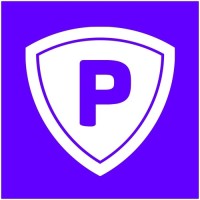
PSafe US Company Cyber Security Posture
psafe.comPSafe Technology is a leader in cybersecurity solutions. We develop products and services to shield devices and data from online dangers like malware, viruses, and ever-evolving security weaknesses. With experience and reputation, the company keeps your systems and information safe. Our mobile product is dfndr security, focused on Android users. It safeguards your phone against malware, phishing scams, and identity theft with the most relevant security features. PSafe's apps use artificial intelligence and machine learning to protect what's most important to you. Beyond mobile security, PSafe offers VScanner. This advanced tool scans your company's domains for vulnerabilities, pinpointing and highlighting potential cybersecurity risks. PSafe's innovative applications provide valuable insights to strengthen your overall security posture. ================================================== Vulnerability Scan Tool: https:/www.vscanner.ai =================================================== Dfndr security https://play.google.com/store/apps/details?id=com.psafe.msuite&hl=en&gl=US ===================================================
PSafe US Company Details
psafe
3 employees
1567.0
541
IT Services and IT Consulting
psafe.com
Scan still pending
PSA_1979398
In-progress
Between 900 and 1000
This score is AI-generated and less favored by cyber insurers, who prefer the TPRM score.
 PSafe US Global Score
PSafe US Global Score.png)

PSafe US Company Scoring based on AI Models
| Model Name | Date | Description | Current Score Difference | Score |
|---|---|---|---|---|
| AVERAGE-Industry | 03-12-2025 | This score represents the average cybersecurity rating of companies already scanned within the same industry. It provides a benchmark to compare an individual company's security posture against its industry peers. | N/A | Between 900 and 1000 |
PSafe US Company Cyber Security News & History
| Entity | Type | Severity | Impact | Seen | Url ID | Details | View |
|---|---|---|---|---|---|---|---|
| PSafe Technology | Breach | 100 | 6 | 01/2021 | PSA233918622 | Link | |
Rankiteo Explanation : Attack threatening the economy of a geographical regionDescription: A data security incident with the dfndr lab, PSafe’s cybersecurity laboratory in a Brazilian database exposed the CPF number and other confidential information of millions of people. The leaked data contained detailed information of 104 million vehicles and about 40 million companies making almost 220 million people potentially vulnerable. The information containing number, license plate, municipality, color, make, model, year of manufacture, engine capacity and even the type of fuel used incase of vehicles and in the case of legal entities, the following were leaked: CNPJ, corporate name, trade name and date of foundation were also traded illegally in some dark web forum | |||||||
PSafe US Company Subsidiaries

PSafe Technology is a leader in cybersecurity solutions. We develop products and services to shield devices and data from online dangers like malware, viruses, and ever-evolving security weaknesses. With experience and reputation, the company keeps your systems and information safe. Our mobile product is dfndr security, focused on Android users. It safeguards your phone against malware, phishing scams, and identity theft with the most relevant security features. PSafe's apps use artificial intelligence and machine learning to protect what's most important to you. Beyond mobile security, PSafe offers VScanner. This advanced tool scans your company's domains for vulnerabilities, pinpointing and highlighting potential cybersecurity risks. PSafe's innovative applications provide valuable insights to strengthen your overall security posture. ================================================== Vulnerability Scan Tool: https:/www.vscanner.ai =================================================== Dfndr security https://play.google.com/store/apps/details?id=com.psafe.msuite&hl=en&gl=US ===================================================
Access Data Using Our API

Get company history
.png)
PSafe US Cyber Security News
4 Things You Can Do To Keep Yourself Cyber Safe
Let's start with the basics of “cyber hygiene,” easy and common-sense ways to protect yourself online.
Interview With Marco DeMello – PSafe
We recently had the pleasure of interviewing PSafe's CEO Marco DeMello. We asked him about his company's dfndr security application and ...
PSafe CEO Marco DeMello On Mobile Cybersecurity And Weaponized AI
DeMello spoke with Chief Executive about the things CEOs need to know about cybersecurity and mobile devices, where the biggest threats are ...
Top cybersecurity M&A deals for 2023
Fears of recession, rising interest rates, mass tech layoffs, and conservative spending trends are likely to make dealmakers cautious, ...
FBI warns about texting between iPhones and Android
A hacking campaign, dubbed Salt Typhoon by Microsoft, is a threat reportedly operated by the Chinese government to conduct cyberespionage ...
7 Breaches, Hacks, and Leaks in 2021
Hundreds of millions of people, including nearly the entire country of Brazil, have had their data stolen by hackers this year.
Only One-Third of Android Antivirus Apps Work Properly
A new report has revealed that only one-third of the most popular Android antivirus give you 100% protection.

PSafe US Similar Companies
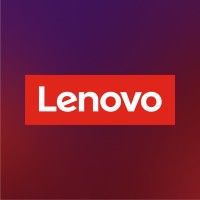
Lenovo
Lenovo is a US$57 billion revenue global technology powerhouse, ranked #248 in the Fortune Global 500, and serving millions of customers every day in 180 markets. Focused on a bold vision to deliver Smarter Technology for All, Lenovo has built on its success as the world’s largest PC company with a
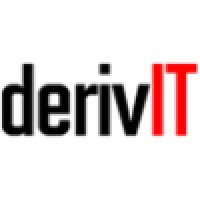
derivIT Solutions
Excelian, Luxoft’s Financial Services division, helps customers maximize efficiency, reduce risk and increase speed of delivery via adoption of better practices and more advanced systems. Excelian delivers an end-to-end service, from consulting to technology services - platform consolidation, infras

Booz Allen Hamilton
Booz Allen is the advanced technology company delivering outcomes with speed for America’s most critical defense, civil, and national security priorities. We build technology solutions using AI, cyber, and other cutting-edge technologies to advance and protect the nation and its citizens. By focusin

Reply
Reply [EXM, STAR: REY] specialises in the design and implementation of solutions based on new communication channels and digital media. As a network of highly specialised companies, Reply defines and develops business models enabled by the new models of AI, big data, cloud computing, digital media a
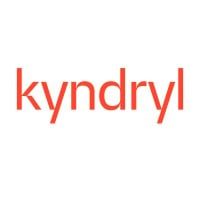
Kyndryl
We have the world’s best talent that design, run, and manage the most advanced and reliable technology infrastructure each day. Together, we think holistically about the health of these vital technology ecosystems. We are a focused, independent company that builds on our foundation of excellence by
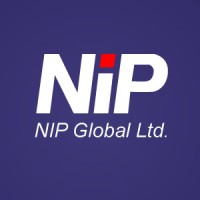
NIP Global LTD
NIP Provides IT Solutions Every Country Needs Even after over 20 years in the industry, NIP Global still continues to provide IT solutions that focus on advanced civil registry for population registration as well as government system management solutions. NIP has come a long way since its formation

Frequently Asked Questions (FAQ) on Cybersecurity Incidents
PSafe US CyberSecurity History Information
Total Incidents: According to Rankiteo, PSafe US has faced 1 incidents in the past.
Incident Types: The types of cybersecurity incidents that have occurred include ['Breach'].
Total Financial Loss: The total financial loss from these incidents is estimated to be {total_financial_loss}.
Cybersecurity Posture: The company's overall cybersecurity posture is described as PSafe Technology is a leader in cybersecurity solutions. We develop products and services to shield devices and data from online dangers like malware, viruses, and ever-evolving security weaknesses. With experience and reputation, the company keeps your systems and information safe. Our mobile product is dfndr security, focused on Android users. It safeguards your phone against malware, phishing scams, and identity theft with the most relevant security features. PSafe's apps use artificial intelligence and machine learning to protect what's most important to you. Beyond mobile security, PSafe offers VScanner. This advanced tool scans your company's domains for vulnerabilities, pinpointing and highlighting potential cybersecurity risks. PSafe's innovative applications provide valuable insights to strengthen your overall security posture. ================================================== Vulnerability Scan Tool: https:/www.vscanner.ai =================================================== Dfndr security https://play.google.com/store/apps/details?id=com.psafe.msuite&hl=en&gl=US ===================================================.
Detection and Response: The company detects and responds to cybersecurity incidents through {description_of_detection_and_response_process}.
Incident Details
Incident 1: Ransomware Attack
Title: {Incident_Title}
Description: {Brief_description_of_the_incident}
Date Detected: {Detection_Date}
Date Publicly Disclosed: {Disclosure_Date}
Date Resolved: {Resolution_Date}
Type: {Type_of_Attack}
Attack Vector: {Attack_Vector}
Vulnerability Exploited: {Vulnerability}
Threat Actor: {Threat_Actor}
Motivation: {Motivation}
Incident 2: Data Breach
Title: {Incident_Title}
Description: {Brief_description_of_the_incident}
Date Detected: {Detection_Date}
Date Publicly Disclosed: {Disclosure_Date}
Date Resolved: {Resolution_Date}
Type: {Type_of_Attack}
Attack Vector: {Attack_Vector}
Vulnerability Exploited: {Vulnerability}
Threat Actor: {Threat_Actor}
Motivation: {Motivation}
Common Attack Types: As of now, the company has not encountered any reported incidents involving common cyberattacks.
Identification of Attack Vectors: The company identifies the attack vectors used in incidents through {description_of_identification_process}.
Impact of the Incidents
Incident 1: Ransomware Attack
Financial Loss: {Financial_Loss}
Data Compromised: {Data_Compromised}
Systems Affected: {Systems_Affected}
Downtime: {Downtime}
Operational Impact: {Operational_Impact}
Conversion Rate Impact: {Conversion_Rate_Impact}
Revenue Loss: {Revenue_Loss}
Customer Complaints: {Customer_Complaints}
Brand Reputation Impact: {Brand_Reputation_Impact}
Legal Liabilities: {Legal_Liabilities}
Identity Theft Risk: {Identity_Theft_Risk}
Payment Information Risk: {Payment_Information_Risk}
Incident 2: Data Breach
Financial Loss: {Financial_Loss}
Data Compromised: {Data_Compromised}
Systems Affected: {Systems_Affected}
Downtime: {Downtime}
Operational Impact: {Operational_Impact}
Conversion Rate Impact: {Conversion_Rate_Impact}
Revenue Loss: {Revenue_Loss}
Customer Complaints: {Customer_Complaints}
Brand Reputation Impact: {Brand_Reputation_Impact}
Legal Liabilities: {Legal_Liabilities}
Identity Theft Risk: {Identity_Theft_Risk}
Payment Information Risk: {Payment_Information_Risk}
Average Financial Loss: The average financial loss per incident is {average_financial_loss}.
Commonly Compromised Data Types: The types of data most commonly compromised in incidents are {list_of_commonly_compromised_data_types}.
Incident 1: Ransomware Attack
Entity Name: {Entity_Name}
Entity Type: {Entity_Type}
Industry: {Industry}
Location: {Location}
Size: {Size}
Customers Affected: {Customers_Affected}
Incident 2: Data Breach
Entity Name: {Entity_Name}
Entity Type: {Entity_Type}
Industry: {Industry}
Location: {Location}
Size: {Size}
Customers Affected: {Customers_Affected}
Response to the Incidents
Incident 1: Ransomware Attack
Incident Response Plan Activated: {Yes/No}
Third Party Assistance: {Yes/No}
Law Enforcement Notified: {Yes/No}
Containment Measures: {Containment_Measures}
Remediation Measures: {Remediation_Measures}
Recovery Measures: {Recovery_Measures}
Communication Strategy: {Communication_Strategy}
Adaptive Behavioral WAF: {Adaptive_Behavioral_WAF}
On-Demand Scrubbing Services: {On_Demand_Scrubbing_Services}
Network Segmentation: {Network_Segmentation}
Enhanced Monitoring: {Enhanced_Monitoring}
Incident 2: Data Breach
Incident Response Plan Activated: {Yes/No}
Third Party Assistance: {Yes/No}
Law Enforcement Notified: {Yes/No}
Containment Measures: {Containment_Measures}
Remediation Measures: {Remediation_Measures}
Recovery Measures: {Recovery_Measures}
Communication Strategy: {Communication_Strategy}
Adaptive Behavioral WAF: {Adaptive_Behavioral_WAF}
On-Demand Scrubbing Services: {On_Demand_Scrubbing_Services}
Network Segmentation: {Network_Segmentation}
Enhanced Monitoring: {Enhanced_Monitoring}
Incident Response Plan: The company's incident response plan is described as {description_of_incident_response_plan}.
Third-Party Assistance: The company involves third-party assistance in incident response through {description_of_third_party_involvement}.
Data Breach Information
Incident 2: Data Breach
Type of Data Compromised: {Type_of_Data}
Number of Records Exposed: {Number_of_Records}
Sensitivity of Data: {Sensitivity_of_Data}
Data Exfiltration: {Yes/No}
Data Encryption: {Yes/No}
File Types Exposed: {File_Types}
Personally Identifiable Information: {Yes/No}
Prevention of Data Exfiltration: The company takes the following measures to prevent data exfiltration: {description_of_prevention_measures}.
Handling of PII Incidents: The company handles incidents involving personally identifiable information (PII) through {description_of_handling_process}.
Ransomware Information
Incident 1: Ransomware Attack
Ransom Demanded: {Ransom_Amount}
Ransom Paid: {Ransom_Paid}
Ransomware Strain: {Ransomware_Strain}
Data Encryption: {Yes/No}
Data Exfiltration: {Yes/No}
Ransom Payment Policy: The company's policy on paying ransoms in ransomware incidents is described as {description_of_ransom_payment_policy}.
Data Recovery from Ransomware: The company recovers data encrypted by ransomware through {description_of_data_recovery_process}.
Regulatory Compliance
Incident 1: Ransomware Attack
Regulations Violated: {Regulations_Violated}
Fines Imposed: {Fines_Imposed}
Legal Actions: {Legal_Actions}
Regulatory Notifications: {Regulatory_Notifications}
Incident 2: Data Breach
Regulations Violated: {Regulations_Violated}
Fines Imposed: {Fines_Imposed}
Legal Actions: {Legal_Actions}
Regulatory Notifications: {Regulatory_Notifications}
Regulatory Frameworks: The company complies with the following regulatory frameworks regarding cybersecurity: {list_of_regulatory_frameworks}.
Ensuring Regulatory Compliance: The company ensures compliance with regulatory requirements through {description_of_compliance_measures}.
Lessons Learned and Recommendations
Incident 1: Ransomware Attack
Lessons Learned: {Lessons_Learned}
Incident 2: Data Breach
Lessons Learned: {Lessons_Learned}
Incident 1: Ransomware Attack
Recommendations: {Recommendations}
Incident 2: Data Breach
Recommendations: {Recommendations}
Key Lessons Learned: The key lessons learned from past incidents are {list_of_key_lessons_learned}.
Implemented Recommendations: The company has implemented the following recommendations to improve cybersecurity: {list_of_implemented_recommendations}.
References
Additional Resources: Stakeholders can find additional resources on cybersecurity best practices at {list_of_additional_resources}.
Investigation Status
Incident 1: Ransomware Attack
Investigation Status: {Investigation_Status}
Incident 2: Data Breach
Investigation Status: {Investigation_Status}
Communication of Investigation Status: The company communicates the status of incident investigations to stakeholders through {description_of_communication_process}.
Stakeholder and Customer Advisories
Incident 1: Ransomware Attack
Stakeholder Advisories: {Stakeholder_Advisories}
Customer Advisories: {Customer_Advisories}
Incident 2: Data Breach
Stakeholder Advisories: {Stakeholder_Advisories}
Customer Advisories: {Customer_Advisories}
Advisories Provided: The company provides the following advisories to stakeholders and customers following an incident: {description_of_advisories_provided}.
Initial Access Broker
Incident 1: Ransomware Attack
Entry Point: {Entry_Point}
Reconnaissance Period: {Reconnaissance_Period}
Backdoors Established: {Backdoors_Established}
High Value Targets: {High_Value_Targets}
Data Sold on Dark Web: {Yes/No}
Incident 2: Data Breach
Entry Point: {Entry_Point}
Reconnaissance Period: {Reconnaissance_Period}
Backdoors Established: {Backdoors_Established}
High Value Targets: {High_Value_Targets}
Data Sold on Dark Web: {Yes/No}
Monitoring and Mitigation of Initial Access Brokers: The company monitors and mitigates the activities of initial access brokers through {description_of_monitoring_and_mitigation_measures}.
Post-Incident Analysis
Incident 1: Ransomware Attack
Root Causes: {Root_Causes}
Corrective Actions: {Corrective_Actions}
Incident 2: Data Breach
Root Causes: {Root_Causes}
Corrective Actions: {Corrective_Actions}
Post-Incident Analysis Process: The company's process for conducting post-incident analysis is described as {description_of_post_incident_analysis_process}.
Corrective Actions Taken: The company has taken the following corrective actions based on post-incident analysis: {list_of_corrective_actions_taken}.
Additional Questions
General Information
Ransom Payment History: The company has {paid/not_paid} ransoms in the past.
Last Ransom Demanded: The amount of the last ransom demanded was {last_ransom_amount}.
Last Attacking Group: The attacking group in the last incident was {last_attacking_group}.
Incident Details
Most Recent Incident Detected: The most recent incident detected was on {most_recent_incident_detected_date}.
Most Recent Incident Publicly Disclosed: The most recent incident publicly disclosed was on {most_recent_incident_publicly_disclosed_date}.
Most Recent Incident Resolved: The most recent incident resolved was on {most_recent_incident_resolved_date}.
Impact of the Incidents
Highest Financial Loss: The highest financial loss from an incident was {highest_financial_loss}.
Most Significant Data Compromised: The most significant data compromised in an incident was {most_significant_data_compromised}.
Most Significant System Affected: The most significant system affected in an incident was {most_significant_system_affected}.
Response to the Incidents
Third-Party Assistance in Most Recent Incident: The third-party assistance involved in the most recent incident was {third_party_assistance_in_most_recent_incident}.
Containment Measures in Most Recent Incident: The containment measures taken in the most recent incident were {containment_measures_in_most_recent_incident}.
Data Breach Information
Most Sensitive Data Compromised: The most sensitive data compromised in a breach was {most_sensitive_data_compromised}.
Number of Records Exposed: The number of records exposed in the most significant breach was {number_of_records_exposed}.
Ransomware Information
Highest Ransom Demanded: The highest ransom demanded in a ransomware incident was {highest_ransom_demanded}.
Highest Ransom Paid: The highest ransom paid in a ransomware incident was {highest_ransom_paid}.
Regulatory Compliance
Highest Fine Imposed: The highest fine imposed for a regulatory violation was {highest_fine_imposed}.
Most Significant Legal Action: The most significant legal action taken for a regulatory violation was {most_significant_legal_action}.
Lessons Learned and Recommendations
Most Significant Lesson Learned: The most significant lesson learned from past incidents was {most_significant_lesson_learned}.
Most Significant Recommendation Implemented: The most significant recommendation implemented to improve cybersecurity was {most_significant_recommendation_implemented}.
References
Most Recent Source: The most recent source of information about an incident is {most_recent_source}.
Most Recent URL for Additional Resources: The most recent URL for additional resources on cybersecurity best practices is {most_recent_url}.
Investigation Status
Current Status of Most Recent Investigation: The current status of the most recent investigation is {current_status_of_most_recent_investigation}.
Stakeholder and Customer Advisories
Most Recent Stakeholder Advisory: The most recent stakeholder advisory issued was {most_recent_stakeholder_advisory}.
Most Recent Customer Advisory: The most recent customer advisory issued was {most_recent_customer_advisory}.
Initial Access Broker
Most Recent Entry Point: The most recent entry point used by an initial access broker was {most_recent_entry_point}.
Most Recent Reconnaissance Period: The most recent reconnaissance period for an incident was {most_recent_reconnaissance_period}.
Post-Incident Analysis
Most Significant Root Cause: The most significant root cause identified in post-incident analysis was {most_significant_root_cause}.
Most Significant Corrective Action: The most significant corrective action taken based on post-incident analysis was {most_significant_corrective_action}.
What Do We Measure?
















Every week, Rankiteo analyzes billions of signals to give organizations a sharper, faster view of emerging risks. With deeper, more actionable intelligence at their fingertips, security teams can outpace threat actors, respond instantly to Zero-Day attacks, and dramatically shrink their risk exposure window.
These are some of the factors we use to calculate the overall score:
Identify exposed access points, detect misconfigured SSL certificates, and uncover vulnerabilities across the network infrastructure.
Gain visibility into the software components used within an organization to detect vulnerabilities, manage risk, and ensure supply chain security.
Monitor and manage all IT assets and their configurations to ensure accurate, real-time visibility across the company's technology environment.
Leverage real-time insights on active threats, malware campaigns, and emerging vulnerabilities to proactively defend against evolving cyberattacks.




